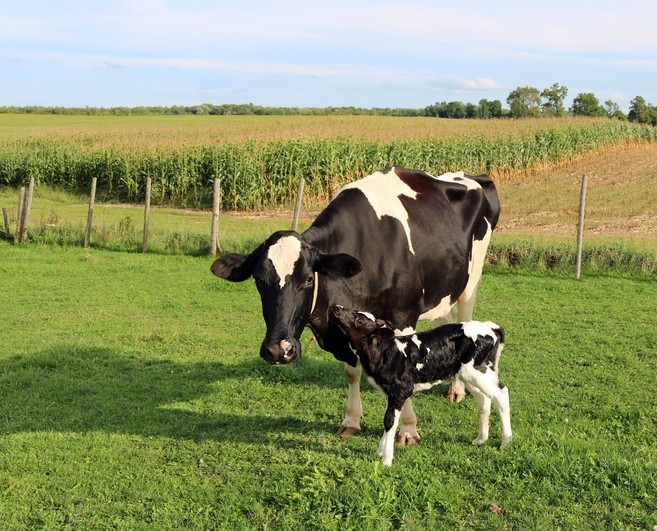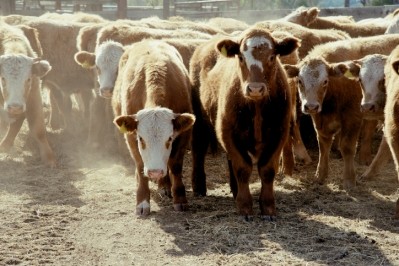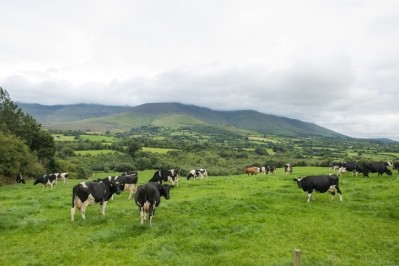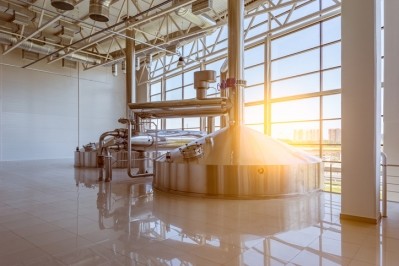Canada can now breed for methane efficient dairy cows

Lactanet Canada, a not-for-profit organization that provides herd management tools and national genetic evaluations for dairy farmers, is undertaking the first national genetic evaluation in the world to help select low-methane dairy cows.
The Methane Efficiency trait has been added to dozens of genetic traits in Canada’s national evaluation system that is routinely used in selecting cattle for breeding. Holstein cattle make up most of Canada’s national dairy herd.
The new tool means breeders can now predict which cows will produce calves that, when fully grown, will releases less of the greenhouse gas (GHG) even as they continue to produce the same amount of milk.
The dairy sector contributes to GHG emissions, mainly through the production of methane (CH4) from enteric fermentation. The global warming potential of CH4 is 28 times that of carbon dioxide, notes a paper. In addition, enteric CH4 is also a loss of productive energy for lactating dairy cows, some 4 to 7% of gross energy intake. Thus, mitigation of enteric CH4 is beneficial from both a nutritional and an environmental perspective.
Building on ground-breaking research
The genetics work done at Lactanet follows years of international collaboration and ground-breaking research.
In fall 2022, the University of Guelph’s Centre for Genetic Improvement of Livestock and its collaborators published a paper in the Journal of Dairy Science describing how to predict methane emissions in dairy cattle using milk mid-infrared reflectance spectroscopy (MIRS).
That study built on research done under two Canadian researcher led projects, the Efficiency Dairy Genome Project (EDGP) and the Resilient Dairy Genome Project (RDGP), both funded by Genome Canada along with national and international partners.
The U of G investigators used artificial intelligence and machine learning approaches to determine that a cow’s milk MIR data can be used as a good predictor of its methane emissions.
As a result of those insights, in collaboration with Semex - a breeding organization located also in Guelph - Lactanet was able to replicate this research through several data processing steps and develop CH4 predictions using milk spectral data and CH4 data collected from research herds in Canada, explained Dr Filippo Miglior, Lactanet’s senior advisor of genetic strategic initiatives and adjunct professor, Department of Animal Biosciences, at the University of Guelph.
This includes records on over 500,000 cows in milk-recorded herds across Canada, he said.
Production levels maintained
Canada’s Methane Efficiency evaluation is on selection for reduced CH4 without affecting production levels.
“We take our breeding values, and we correct those for the milk, fat, and protein yields,” Dr Miglior told us.
Methane Efficiency can thus be defined as methane production genetically independent of milk fat, and protein yields, he said.
Reduction goals
The values are now being used to estimate how much methane will be produced by dairy cows on farms across Canada.
“Breeding organizations can now use this methane emission evaluation [tool] on all their bulls. In addition to that, any dairy producer who is using genetic evaluations can use this trait to select within their breeding programs,” said Dr Hannah Sweett, knowledge transfer advisor, genetics portfolio, Lactanet.
This is going to be game-changing, she said, resulting in a more environmentally efficient national dairy herd.
“If a producer continually selects for Methane Efficiency between now and 2050, they can expect to reduce methane emissions within their herds by 20-30%,” added Dr Sweett.
The overall objective of the EDGP was to improve feed efficiency and reduce methane emissions in dairy cattle using genomics. “That project created an international partnership and database for methane traits and feed efficiency traits,” explained Dr Miglior.
The RDGP, which got underway in 2020 and is wider in scope, grew out of the earlier project. The four-year long project aims to use genomic tools to develop new datasets and genomic tools to develop a more resilient cow - an animal able to adapt rapidly to changing environmental conditions, without compromising its productivity, health, or fertility. The goal is to have a set of new genomic breeding tools for the dairy industry based on a novel selection index for resilience, which will include novel traits related to fertility, health, and environmental efficiency.








